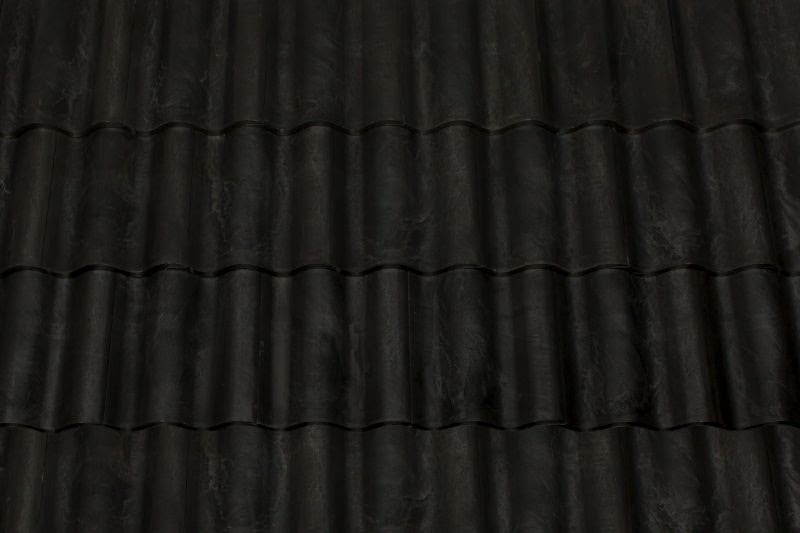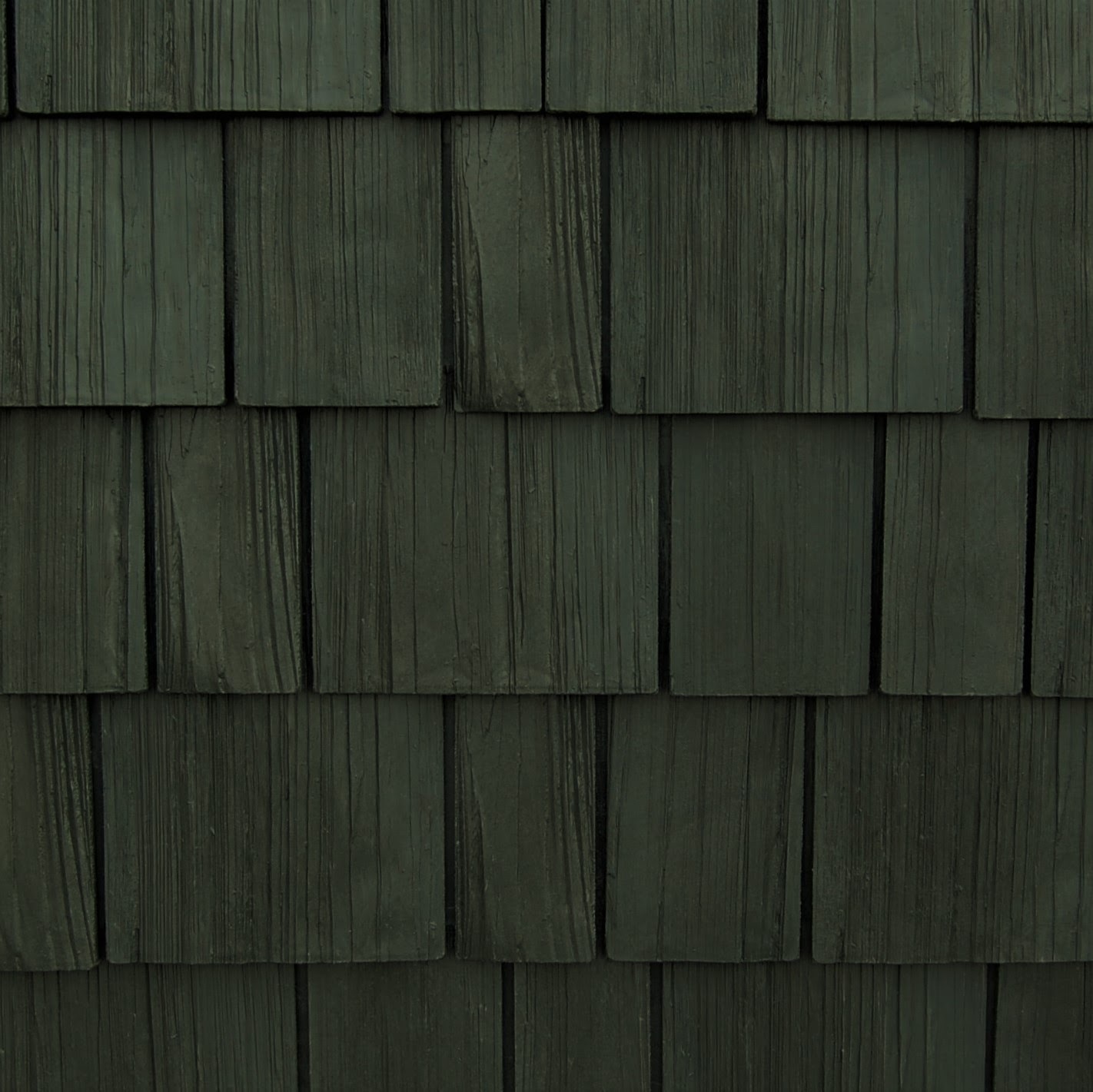Your roof comprises about 40% of the visible exterior of your home, so it’s extremely important to choose the right color and style of roofing tile to enhance the beauty and curb appeal of your house
(This is also why many choose black roof tiles.)
However, more often than not, homeowners and homebuyers tend to forget one thing about roofing tiles that is arguably more important than the appearance of the roof itself:
The actual composition of the roofing tiles—the material they are manufactured from—and how it impacts the home.
In fact, the material composition of black roof tiles—and roof tiles, in general—can affect the lifespan of your roof and, therefore, the replacement costs in the future.
Let’s consider 4 of the most popular roofing tile materials to see how their makeup affects the longevity of your roof and the quantity in your pocket:
- Asphalt shingles
- Slate roof tiles
- Clay roof tiles
- Cedar shakes
Black Roof Tile Options
1. Black Asphalt Shingles

Asphalt shingles are composed of a fiberglass mat that is covered in asphalt and then coated with small particles of mica, schist, slate, and ceramic, and the back is covered with a mixture of talc and sand or mica in order to keep the shingles from adhering to each other.
There are three types of asphalt shingles, but the most common are the three-tab and the architectural shingle. The three-tab is normally a 20-25 year shingle while the architectural shingle has a lifetime warranty. The actual warranty is prorated for most asphalt shingles after 5-10 years. There are other styles available but the material composition and warranties are very similar.
One of the big disadvantages of asphalt shingles is their inherent tendency to absorb heat. Even lighter shades such as tan and even white, will absorb more heat than metal or composite shingles. This heat absorbing quality makes the use of black asphalt roof tiles problematic and other measures will need to be taken in order to reduce the transfer of heat to the home, such as installing radiant heat plywood on the roof and increasing the R-value of insulation in the attic.
In addition, the granules that are embedded in the asphalt shingle slowly wash off, weakening the shingle over time and making them susceptible to wind and hail damage. This can result in cracked, broken or loose shingles that can lead to water infiltration.
The heat buildup in black or other dark asphalt tiles can cause excessive curling of the shingles and result in reducing their lifespan by as much as 50%, which is another consideration not only for long-term cost, but also the environment, as asphalt shingles are not recyclable and will end up in the landfill every 20-30 years.
2. Black Slate Roof Tiles

Known for their high quality and timeless beauty, slate roof tiles have a long history of use in America and throughout Europe. More commonly recognized, slate roofing is associated with fine homes and castles of old that are known for their longevity.
In fact, there are natural slate tile roofs still in use today that are over 100 years old, and their popularity can be seen in the different types of properties such as: residential homes (including French architecture and other European styles), churches, museums, restaurants, and of course, historical buildings.
One of the reasons they are so popular is they are a natural element and considered environmentally-friendly, despite also being:
- Extremely heavy, requiring additional structural supports for the roof
- Difficult to install (must be installed by experienced professionals)
- Expensive to repair due to brittleness and the danger of being walked on
- Expensive to repair when considering installation price
The good news is: Black slate roof tiles are not affected by the heat or cold in the same way that asphalt shingles are, which means that it could be used in multiple locations.
Uunfortunately, slate roof tiles—and black slate roof tiles—are getting more difficult to find and purchase because most slate is only quarried in Vermont, Pennsylvania, Virginia, and New York. But the fact that it could last up to 50 years or more means slate could still be a great investment for a roof.

3. Black Clay Roof Tiles
Mention clay roof tiles, and usually thoughts of a Spanish villa covered with beautiful rows of red barrel tiles comes to mind.
Clay roof tiles, like slate, are made from natural products and perform well in areas of high temperatures, making them great choices in many locations.
Originally, clay roof tiles were made by firing clay or terracotta, but today these tiles are more likely than not made from concrete, though coming in more colors and designs.
The downside is that clay roof may require your house to be engineered to carry additional weight—or else you may experience a partial or full collapse of your entire roof.
However, despite being heavy, some clay tile roofs have been protecting their residents for more than one hundred years, and because they perform well in high temperatures, darker colors do not affect the longevity of the roof.
In fact, black clay roof tiles are very popular, giving this roof style another look other than red. A few other advantages of clay roof tiles include:
- Bug resistant
- Rot-resistant
- Energy efficient
- Environmentally-friendly.
- Low maintenance

4. Black Cedar Shakes
Cedar shakes are popular in every category of construction — residential and commercial.
They are just as popular on a simple country ranch home as they are on French styled home in New England. This is in part due to their rustic, rough-cut look that derives from the way they are made.
Natural cedar shakes are cut or slabbed from a tree, resulting in uneven and odd-sized roof tiles, but the process of making these tiles today has been streamlined, producing shakes that have flat backs that are easier to install than the old-fashioned hand cut product.
Unfortunately, natural cedar roofing tiles require regular maintenance to prevent mold and mildew damage. The roof should also be inspected on a regularly to make sure that tree limbs and leaves do not build up on the roof where they can trap moisture and cause damage.
Another downside is that cedar shakes require the expertise of a professional roofer with experience to correctly install the product. The reason is, great care needs to be taken to ensure that no leaks occur due to mis-aligned shingles. Furthermore, real cedar shakes may present some problems with local building codes due to fire hazards, if not properly treated.
Synthetic Roof Tiles Add Beauty And Reduce Maintenance
The advantages of synthetic or composite roof tiles over natural products are:
- Reduced weight/no need for added structural improvement.
- Ease of installation
- Low maintenance
- Unlimited color options.
- 50-year limited warranty.
- Class 4 impact rating.
- Available Class A fire rating.
- Fully recyclable
- Environmentally-friendly.
- Manufactured for consistency.
Brava Roof Tiles Are the Superior Choice
If you are thinking about slate, barrel tiles or cedar shakes, Brava Roof Tiles are premium roofing products that are easily comparable.
Just check out our beautiful photo and video galleries. Brava’s Cedar Shake, Spanish Barrel Tile, and Old World Slate roofing tiles are available in black and many other colors — including custom colors.
We also offer free samples and can help you find a professional installer to make sure the job is done right.
Brava has been providing state of the art synthetic roofing tiles for decades and our products are on homes across America and in Europe.
Contact us today for expert advice, great customer service, and a free quote.
For more homeowner information, please visit the links below:



